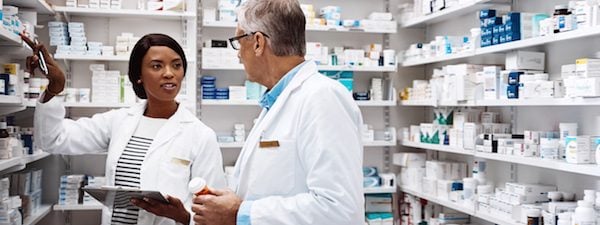What Is the Average Pharmacist Student Loan Debt?
Pharmacy school students in the class of 2023 owed an estimated $167,711 in student debt, on average.

Many, or all, of the products featured on this page are from our advertising partners who compensate us when you take certain actions on our website or click to take an action on their website. However, this does not influence our evaluations. Our opinions are our own. Here is a list of our partners and here's how we make money.
The average pharmacist student loan debt is $167,711, according to the American Association of Colleges of Pharmacy. The average is based on estimates from the class of 2023 pharmacy school graduates surveyed by the AACP.
With a $167,711 student loan balance, you’d owe about $2,039 a month on the standard, 10-year federal repayment plan, assuming a 8.05% average interest rate.
Average pharmacist student debt over time
Eighty-two percent of pharmacy school graduates took out loans to pay for their Pharm.D. program in 2023, according to the AACP. That percentage has been relatively consistent since 2015, but the average pharmacist student debt has seen a recent dip:
Pharmacy School Graduation Year | Percentage of Students Who Borrowed | Estimated Average Student Loan Debt |
|---|---|---|
2022 | 82% | $167,711 |
2021 | 84% | $170,444 |
2020 | 86% | $179,514 |
2019 | 85% | $172,329 |
2018 | 85% | $160,000 |
2017 | 86% | $159,386 |
2016 | 87.5% | $157,425 |
2015 | 89% | $149,320 |
» MORE: Student loan debt statistics
Borrowing has increased for pharmacy programs at both public and private colleges. Currently, the average pharmacist student loan debt is $200,305 at private college and $138,060 at public schools. Those averages were $179,000 and $126,469, respectively, for the class of 2015 graduates.
Average Student Loan Amounts by Debt Type
Debt type | Average debt |
|---|---|
$29,300. | |
$77,300. | |
$30,639. | |
$132,740. | |
$51,850. | |
$212,341. | |
$296,500. | |
$170,956. | |
$40,000-$54,999. | |
$202,647. | |
Sources | |
How to pay off pharmacy school loans
Pharmacy school debt can feel overwhelming. But there are several options for repaying pharmacy school loans. The best repayment approach for you depends on your post-graduation plans.
If you’re doing a residency program: You may be able to defer payments, but switching to a federal income-driven repayment plan can help make payments more affordable. These plans cap monthly payments at 10% to 20% of your income and forgive any amount that remains after 20 or 25 years, depending on the plan. Once you complete a residency, consider pursuing a loan forgiveness program or refinancing.
If you’re working in the public sector or in an underserved area: You may be eligible for a pharmacist loan forgiveness program. The most popular program is Public Service Loan Forgiveness, which offers tax-free forgiveness after you make 10 years’ worth of payments while working for the government or a nonprofit. To maximize forgiveness, make qualifying payments on an income-driven repayment plan.
If you’re working in the private sector: Student loan refinancing can save you money in interest and help you become debt-free faster. To refinance student loans, you typically need good credit — at least a score in the high 600s — and a debt-to-income ratio of 50% or lower. Once you refinance, you’re no longer eligible for income-driven repayment and federal forgiveness programs, including Public Service Loan Forgiveness.

